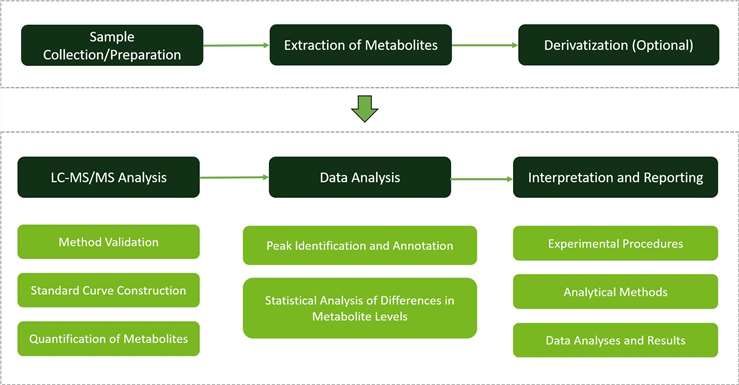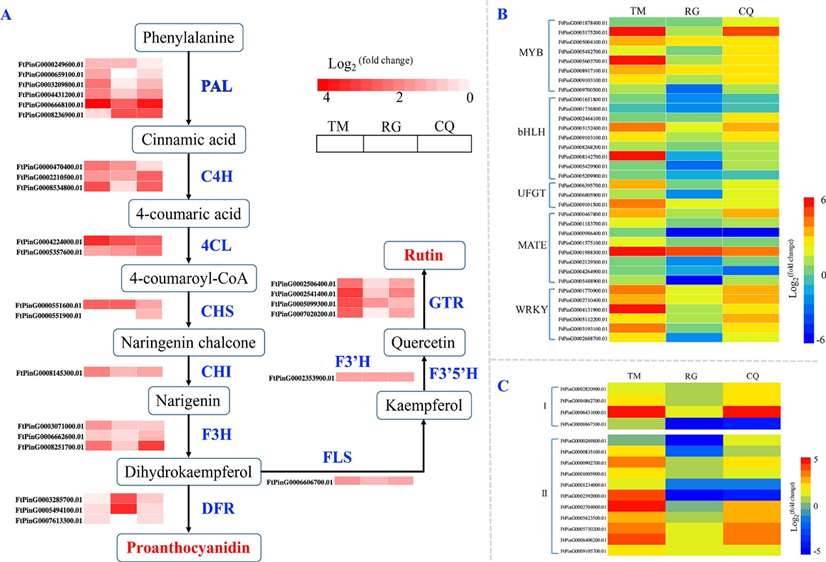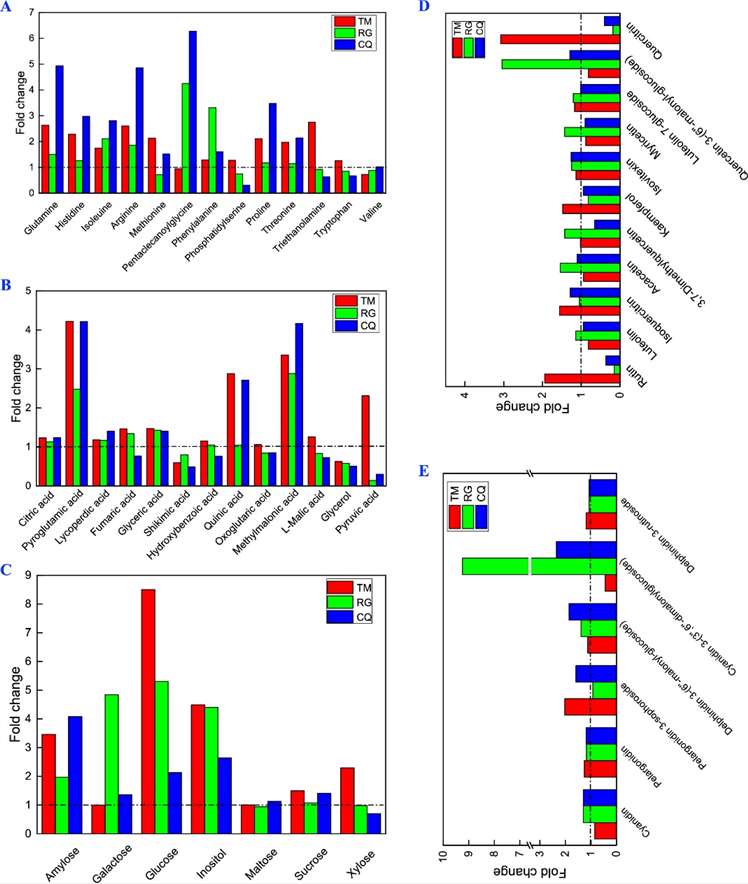What is Limonene?
Limonene is a prominent monoterpene compound and a significant component of essential oils extracted from plants. This colorless, oily liquid is best known for its fragrant aroma, reminiscent of lemons, and is found in the peels of citrus fruits such as oranges, lemons, tangerines, grapefruits, and kumquats. There are three isomeric forms of limonene: levorotatory (l-limonene), dextrorotatory (d-limonene), and racemic (rac-limonene). Each isomer exhibits unique properties and applications, making limonene a versatile compound used across various industries.
The metabolism of limonene is significant due to its diverse biological activities, including antibacterial, antifungal, anti-inflammatory, antioxidant, and potential anticancer properties. Understanding the metabolic pathways and enzymatic processes involved in limonene production and degradation can provide insights into its roles in plant physiology and its potential applications in pharmaceuticals, agriculture, and various industries. Creative Proteomics provides specialized services to analyze limonene metabolism, aiding researchers and industries in harnessing its full potential for various applications. Our detailed metabolic profiling and pathway analysis enable a deeper understanding of limonene's role in plant biology.
Limonene Analysis Service by Creative Proteomics
Limonene Metabolite Profiling: We perform quantitative and qualitative analysis of limonene and its metabolites in plant tissues using advanced techniques such as GC-MS and LC-MS. This allows us to identify and quantify the various metabolites involved in limonene metabolism, providing a detailed profile of the metabolic state of the plant.
Limonene Pathway Elucidation: We identify and map the biochemical pathways involved in limonene biosynthesis and degradation. Through comprehensive pathway analysis, we can determine the specific steps and enzymes involved in limonene metabolism, enabling a thorough understanding of how limonene is produced and utilized in plants.
Limonene Metabolism Enzyme Activity Assays: We measure the activities of key enzymes involved in the terpene biosynthetic pathway, such as limonene synthase (TS). By assessing enzyme activity, we can gain insights into the regulation of limonene production and the efficiency of the biosynthetic pathway.
Limonene Metabolism Gene Expression Analysis: We assess the expression levels of genes encoding enzymes related to limonene metabolism using techniques such as qPCR and RNA sequencing. This helps us understand how genetic regulation affects limonene production and how environmental factors or genetic modifications may influence gene expression.
Limonene Content Analysis and Quality Control: We provide precise quantification of limonene content, ensuring that our clients receive reliable data for their applications. Whether it is for regulatory compliance, product development, or research purposes, our quality control protocols ensure that the limonene content analysis meets the highest standards.
Techniques and Instrumentation for Limonene Analysis
Gas Chromatography-Mass Spectrometry (GC-MS): Equipped with the GC-MS 5977B from Agilent, this technique excels in separating and identifying limonene isomers and other volatile compounds in essential oils. The GC component efficiently separates complex mixtures, while the MS component provides high-resolution mass spectra for precise identification and quantification. This system's sensitivity and specificity are enhanced, ensuring accurate analysis of limonene and related compounds.
Liquid Chromatography-Mass Spectrometry (LC-MS): The AB Sciex QTRAP 6500+ LC-MS/MS system offers superior capabilities for analyzing non-volatile compounds like limonene and its metabolites. It features advanced chromatographic methods to improve speed and throughput, utilizing the QTRAP functionality for simultaneous quantitative MRM™ (Multiple Reaction Monitoring) and qualitative QTRAP scanning. This integrated approach maximizes throughput by requiring only one injection for both types of scans, thereby enhancing efficiency without compromising on data quality.

Why Choose Us?
- High Sensitivity: The use of SIM in GC-MS or MRM in LC-MS ensures ultra-high sensitivity and accurate quantification of limonene. This dual approach allows for the detection and quantification of limonene compounds at ng/mL levels, crucial for studies involving trace analysis.
- Precision and Reliability: Our advanced analytical processes incorporate dual quality control systems. In addition to automated quality controls, we conduct thorough manual checks at various stages of the analysis. This meticulous approach ensures that every data point is verified for accuracy, contributing to the robustness of our findings.
- Comprehensive Databases: Equipped with extensive commercial databases such as NIST and Wiley, and specialized metabolomics libraries like Fiehn and GMD, our system accurately identifies and quantifies a wide range of limonene-related compounds.
- High Throughput: Creative Proteomics's advanced analytical platforms support high-throughput analysis, enabling the simultaneous processing of thousands of samples. This capability is vital for large-scale research projects and industrial applications where rapid and accurate data collection is essential.
Applications of Limonene Analysis
Medical and Pharmaceutical Applications: Limonene is extensively studied in medical and pharmaceutical research for its anti-inflammatory, antioxidant, and anticancer bioactivities. By accurately quantifying limonene and its metabolites, our analysis services help in understanding its therapeutic potential and efficacy. This information is crucial for developing new drugs and treatments.
Agricultural and Environmental Impact: Our analysis services at Creative Proteomics enable precise detection and quantification of limonene in various plant species, facilitating the development of eco-friendly pesticides. Additionally, understanding limonene levels in plants helps in assessing their role in plant defense mechanisms and environmental interactions.
Food and Beverage Industry: Limonene contributes to the flavor and aroma profiles of citrus fruits and other plant-based products. By analyzing limonene content, we assist in quality control, flavor enhancement, and product development, ensuring that consumers receive the highest quality products.
Cosmetic and Personal Care Products: Limonene is widely used in cosmetics and personal care products due to its pleasant fragrance and potential skin benefits. Our detailed analysis helps manufacturers ensure the purity and safety of limonene in their products, meeting regulatory standards and consumer expectations.
Sample Requirements for Limonene Assay
| Sample Type |
Preparation Method |
Volume/Amount Required |
Storage Conditions |
Notes |
| Plant Tissues |
Homogenize and extract with solvent |
1-2 g |
-20°C or lower |
Use fresh or rapidly frozen samples |
| Fruit Peels |
Homogenize and extract with solvent |
5-10 g |
-20°C or lower |
Ensure complete removal of wax and dirt |
| Essential Oils |
Direct use or dilute with solvent |
0.5-1 mL |
Room temperature, dark place |
Avoid prolonged exposure to light and air |
| Food Samples (Juices) |
Centrifuge and filter |
10-20 mL |
4°C |
Store in airtight containers |
| Cosmetic Products |
Homogenize if solid, direct use if liquid |
1-2 mL/g |
Room temperature |
Ensure thorough mixing for homogeneous samples |
| Pharmaceutical Preparations |
Dissolve in suitable solvent |
1-2 mL/g |
Room temperature |
Use inert solvents to avoid degradation |
If your aim is to analyze plant limonene metabolism, a minimum of six biological replicates is required for sample submission.
For other sample types not listed above, please consult our technical support or sales team for specific requirements and recommendations.
Case. Transcriptomic and metabolic analyses reveal differences in monoterpene profiles and the underlying molecular mechanisms in six grape varieties with different flavors
Background:
This study investigates variations in monoterpene content and molecular mechanisms in six grape varieties.
Monoterpenes, crucial for grape aroma and flavor, are synthesized via the MEP and MVA pathways. Understanding these biosynthetic processes, influenced by genetic and environmental factors, is vital for enhancing grape flavor and aroma profiles in breeding programs.
Samples:
Six table grape cultivars, including 'Red Globe,' 'Moldova,' 'Shine Muscat,' 'Shine 13,' 'Summer Black,' and 'Hutai 8,' were harvested in Weinan. The grapes were collected in three biological replicates of 400 berries each, from different vines, and stored at -80°C for metabolome and transcriptome analyses.
Technical methods procedure:
Physicochemical ripeness parameters including berry weight, total soluble solids (TSS), and titratable acidity (TA) were measured using a digital refractometer and titration according to national standards.
The extraction of monoterpene compounds involved grinding frozen berries, followed by centrifugation and solid phase extraction (SPE) using Cleanert PEP-SPE cartridges.
Monoterpene compounds were analyzed using GC-MS on an Agilent system, with identification via the NIST14 MS database and quantification using internal standards.
Odor Activity Values (OAVs) were calculated based on compound concentrations relative to reported odor thresholds from literature sources.
RNA was extracted using ethanol precipitation and CTAB-PBIOZOL reagent for RNA sequencing on a BGISEQ-500 system, with differential expression analysis conducted using DESeq2 and validated by qRT-PCR.
Statistical analyses included one-way ANOVA with Tukey's HSD test, hierarchical cluster analysis, PCA using MetaboAnalyst 4.0, and Pearson's correlation visualization using TBtools.
Results
The study measured berry weight, total soluble solids (TSS), and titratable acidity (TA) for six grape varieties. 'Shine Muscat' and 'Red Globe' had the highest berry weights, followed by 'Shine 13' and 'Hutai 8'. All varieties met ripeness criteria with TSS ≥16 °Brix. 'Shine Muscat' had the highest TSS, while 'Shine 13' had the highest TSS/TA ratio.
Free monoterpene analysis identified varying compounds among grape types. 'Shine Muscat' and 'Shine 13' had the highest concentrations, dominated by linalool. Strawberry-type cultivars like 'Summer Black' had different dominant compounds like β-citronellol. Neutral aromatic cultivars showed distinct profiles with limonene prevalent in 'Moldova'.
Bound monoterpene analysis showed 'Shine Muscat' and 'Shine 13' had higher concentrations, particularly nerol and linalool. Strawberry-type cultivars had α-terpineol as the major compound, while neutral cultivars showed low concentrations overall.
 Fig 1. (A) Changes in the expression of genes related to rutin and proanthocyanidin biosynthesis in Tartary buckwheat under cold stress. For the heatmap, each row represents a gene, and three columns represent three Tartary buckwheat genotypes (TM, RG, and CQ). PAL: phenylalanine ammonia lyase; C4H: cinnamate-4-hydroxylase; 4CL: 4-coumarate CoA ligase; CHS: chalcone synthase; CHI: chalcone isomerase; F3H: flavanone-3-hydroxylase; F3′H: flavonoid-3′-hydroxylase; F3′5′H: flavonoid-3′5′-hydroxylase; FLS: flavonol synthase; and DFR: dihydroflavonol reductase. (B) Heatmap of changes in the expression of transcription factors under cold stress. A total of 34 transcription factors (belonging to five groups) were differentially expressed. (C) Heatmap of changes in the expression of genes related to proline and MDA under cold stress. I: genes related to MDA and II: genes related to proline.
Fig 1. (A) Changes in the expression of genes related to rutin and proanthocyanidin biosynthesis in Tartary buckwheat under cold stress. For the heatmap, each row represents a gene, and three columns represent three Tartary buckwheat genotypes (TM, RG, and CQ). PAL: phenylalanine ammonia lyase; C4H: cinnamate-4-hydroxylase; 4CL: 4-coumarate CoA ligase; CHS: chalcone synthase; CHI: chalcone isomerase; F3H: flavanone-3-hydroxylase; F3′H: flavonoid-3′-hydroxylase; F3′5′H: flavonoid-3′5′-hydroxylase; FLS: flavonol synthase; and DFR: dihydroflavonol reductase. (B) Heatmap of changes in the expression of transcription factors under cold stress. A total of 34 transcription factors (belonging to five groups) were differentially expressed. (C) Heatmap of changes in the expression of genes related to proline and MDA under cold stress. I: genes related to MDA and II: genes related to proline.
 Fig 2. Changes in metabolites in three Tartary buckwheat phenotypes in response to cold stress. (A) Amino acids and their derivatives, (B) organic acid and their derivatives, (C) sugars and their derivatives, (D) flavone biosynthesis, and (E) anthocyanin biosynthesis.
Fig 2. Changes in metabolites in three Tartary buckwheat phenotypes in response to cold stress. (A) Amino acids and their derivatives, (B) organic acid and their derivatives, (C) sugars and their derivatives, (D) flavone biosynthesis, and (E) anthocyanin biosynthesis.
Reference
- Song, Y. (2022). "Different Phenylalanine Pathway Responses to Cold Stress Based on Metabolomics and Transcriptomics in Tartary Buckwheat Landraces." Journal of Agricultural and Food Chemistry 70(2), 687-698.



 Fig 1. (A) Changes in the expression of genes related to rutin and proanthocyanidin biosynthesis in Tartary buckwheat under cold stress. For the heatmap, each row represents a gene, and three columns represent three Tartary buckwheat genotypes (TM, RG, and CQ). PAL: phenylalanine ammonia lyase; C4H: cinnamate-4-hydroxylase; 4CL: 4-coumarate CoA ligase; CHS: chalcone synthase; CHI: chalcone isomerase; F3H: flavanone-3-hydroxylase; F3′H: flavonoid-3′-hydroxylase; F3′5′H: flavonoid-3′5′-hydroxylase; FLS: flavonol synthase; and DFR: dihydroflavonol reductase. (B) Heatmap of changes in the expression of transcription factors under cold stress. A total of 34 transcription factors (belonging to five groups) were differentially expressed. (C) Heatmap of changes in the expression of genes related to proline and MDA under cold stress. I: genes related to MDA and II: genes related to proline.
Fig 1. (A) Changes in the expression of genes related to rutin and proanthocyanidin biosynthesis in Tartary buckwheat under cold stress. For the heatmap, each row represents a gene, and three columns represent three Tartary buckwheat genotypes (TM, RG, and CQ). PAL: phenylalanine ammonia lyase; C4H: cinnamate-4-hydroxylase; 4CL: 4-coumarate CoA ligase; CHS: chalcone synthase; CHI: chalcone isomerase; F3H: flavanone-3-hydroxylase; F3′H: flavonoid-3′-hydroxylase; F3′5′H: flavonoid-3′5′-hydroxylase; FLS: flavonol synthase; and DFR: dihydroflavonol reductase. (B) Heatmap of changes in the expression of transcription factors under cold stress. A total of 34 transcription factors (belonging to five groups) were differentially expressed. (C) Heatmap of changes in the expression of genes related to proline and MDA under cold stress. I: genes related to MDA and II: genes related to proline. Fig 2. Changes in metabolites in three Tartary buckwheat phenotypes in response to cold stress. (A) Amino acids and their derivatives, (B) organic acid and their derivatives, (C) sugars and their derivatives, (D) flavone biosynthesis, and (E) anthocyanin biosynthesis.
Fig 2. Changes in metabolites in three Tartary buckwheat phenotypes in response to cold stress. (A) Amino acids and their derivatives, (B) organic acid and their derivatives, (C) sugars and their derivatives, (D) flavone biosynthesis, and (E) anthocyanin biosynthesis.

